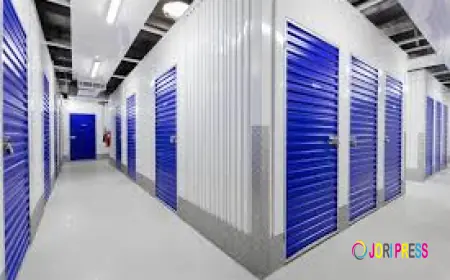The Ultimate Guide to Work Table Workbench
Eureka Tools Pte Ltd has had over 45 years of experience in the industry specializing in supplying and servicing high-quality industrial tools & equipment for a wide range of industrial applications, such as manufacturing, construction, marine, shipbuilding and offshore oilfields etc.

The work table workbench is considered one of the significant elements of furniture in any workshop, garage, laboratory, or industrial facility. It is a strong, stable, and durable platform where tools, materials, and imagination come together. Whatever it is, whether it is furniture, assembly, or making a workshop, the right workbench, anyway, increases efficiency, comfort, and accuracy.
What Is a Work Table Workbench?
A work table or workbench is a table specifically designed for manual or mechanical work. The main difference between workbenches and regular tables is that the former are capable of supporting heavy weights, absorbing vibrations, and tolerating the wear and tear caused by tools or machines. For practical use, they come with drawers, shelves, or pegboards for the neat storage of items; they are typically made of steel or hardwood, or a combination of both.
Common uses include:
- Woodworking and carpentry
- Metal fabrication
- Electronics assembly
- Automotive repair
- Packaging and inspection
Key Features of a Good Workbench
Strong Frame Construction
A workbench of quality typically has a frame of powder-coated steel or heavy aluminum. This provides stability, and wobbling cannot occur even when used intensively.
Durable Work Surface
Depending on the usage, the tabletop may be of hardwood, stainless steel, or laminate. Hardwood tops can be used in woodworking, whereas steel surfaces can be used in mechanical or industrial work.
Adjustable Height Options
Contemporary workbenches are usually adjustable in terms of height to enhance ergonomics. This option will aid the user to be in the right posture and will minimise exhaustion when working long hours.
Integrated Storage Solutions
They usually have drawers, shelves, and pegboards to store the hand tools, screw, as well as materials in an accessible place that would keep the workspace clean and efficient.
Mobility and Flexibility
Other workbenches have caster wheels, so that they are easy to move around the workshop or reposition to suit other purposes.
Load Capacity
The carrying capacity of a workbench may be in the form of a few hundred to several thousand kilograms, depending on its design and materials.
Types of Work Table Workbenches
1. Industrial Workbenches
Factories and assembly lines contain workbenches constructed in industries. They provide robust steel frames, intense load carrying, and hard surfaces that can withstand intermittent industrial applications.
2. Woodworking Workbenches
Carpenters and amateur DIYers will find use in woodworking benches. They contain vises, clamps, and dog holes to secure wooden components in the process of cutting, sanding, or assembling.
3. Metalworking Workbenches
Metalworking workbenches have steel-reinforced or heat, sparks, and impact-resistant tops. They suit well in welding, grinding, cutting, and heavy fabrication.
4. Portable Workbenches
Portable workbenches are light, folding, and easy to transport. They offer stability in small projects or work out in the field where space and movement are a concern.
5. Electronics Workbenches
Electronics workbenches include anti-static mats, lighting, and power outlets. They are also safe and accurate when assembling or repairing sensitive electronic parts and circuit boards.
Common Uses of Work Tables and Workbenches
Work tables and work benches have a very broad usage:
- Assembly and inspection of manufacturing plants.
- Solding and component screening work stations.
- Cutting, sanding, and fitting in carpentry and joinery shops.
- Part repair and auto maintenance garages.
- Experiment and sample preparation laboratories.
- Student training and student workshop educational establishments.
- Home studios or garages to work on hobbies, pain, and craft.
Maintenance Tips for Work Tables and Workbenches
To keep your bench in top condition:
- Wipe down surfaces used frequently.
- Exposure to moisture should be avoided except in stainless steel.
- Periodically check bolts and fasteners.
- Apply grease to the moving parts and joints of metals.
- Worn wooden tops should be refinished or replaced.
- Clean up tools by ensuring that they are organized to avoid scratches or dents.
- When dealing with heavy tools, use protective liners or mats.
When your bench is properly maintained, it has a longer life span, and the performance is always uniform.
The Role of Workbenches in Different Work Environments
The usage of workbenches is very diverse. Every environment needs particular designs and aspects.
a. Industrial Workshops
Industrial workbenches can be of steel or heavy wood, depending on the factories and production lines. Such benches are high-load, continuously vibrating, and are also in contact with oils, chemicals, and heat. They usually have built-in tool drawers, electrical points, and can be adjusted in terms of height.
b. Garages and Automotive Workshops
Mechanics are using metal workbenches to repair engines, assemble tools, and also do inspections. Such benches can be reinforced at the top and can contain hand tool storage, and/or pegboards or overhead lighting.
c. Laboratories and Research Facilities
The lab work table is concerned with cleanliness and corrosion resistance. They are usually constructed out of stainless steel or epoxy resin, providing a non-reactive surface in which to do chemical or biological experiments.
d. Carpentry and Woodworking Shops
Wooden workbenches. Woodenwork benches are conventional woodworking benches. They can be fitted with vises and dog holes, which are useful in holding wooden pieces firmly during the cutting process, sanding, or finishing.
e. Electronic Assembly
In the case of technicians working with sensitive circuit boards, ESD (Electrostatic Discharge) workbenches protect against the effects of the use of static electricity. The conductive substances, grounding cords, as well as antistatic mats, are used on these benches.
f. Home and DIY Use
A portable workbench or a folding workbench can be used in home workshops and for DIY. They are easy to carry but strong, so that they can be stored easily once they are used.
Sustainable and Eco-Friendly Workbenches
As the concept of sustainability increases, manufacturers are now relying on eco-certified wood, recycled st, and low-VOC finishes to lessen their effect on the environment. Other brands are also coming up with modular benches, which can be upgraded rather than discarded, thereby encouraging their long-term applications.
How Workbenches Improve Workplace Efficiency
A properly designed work table or workbench would improve productivity, safety, and organization in any industry. In woodworking, metalworking, or any other lab, the appropriate selection of a bench guarantees efficiency, comfort, and durability of performance in any working environment, at the workplace or home.
For example:
- Overhead shelves reduce bending.
- Drawer systems group similar tools.
- Adjustable height reduces fatigue during long shifts.
These small ergonomic improvements compound into major productivity gains over time.
Conclusion
An ergonomically designed workstation reduces the amount of wasted motion. Employees do not have to waste time finding out how to work or reposition themselves. Research on the ergonomics of workplaces indicates that well-organized workbenches may enhance productivity as much as 20-30 percent.
What's Your Reaction?
 Like
0
Like
0
 Dislike
0
Dislike
0
 Love
0
Love
0
 Funny
0
Funny
0
 Angry
0
Angry
0
 Sad
0
Sad
0
 Wow
0
Wow
0















































